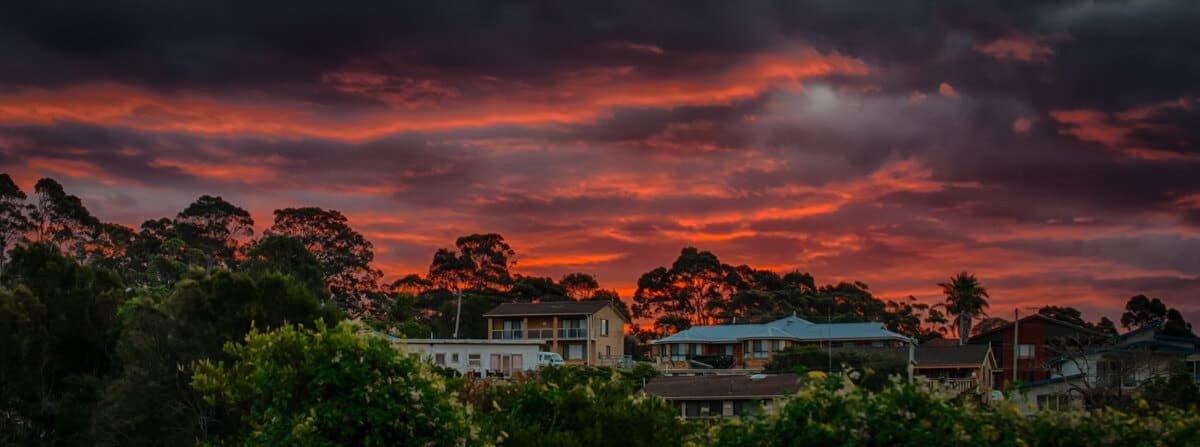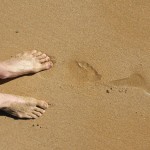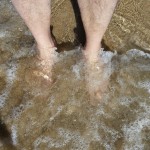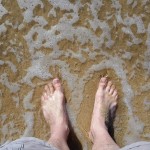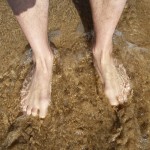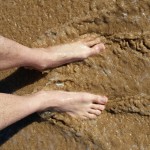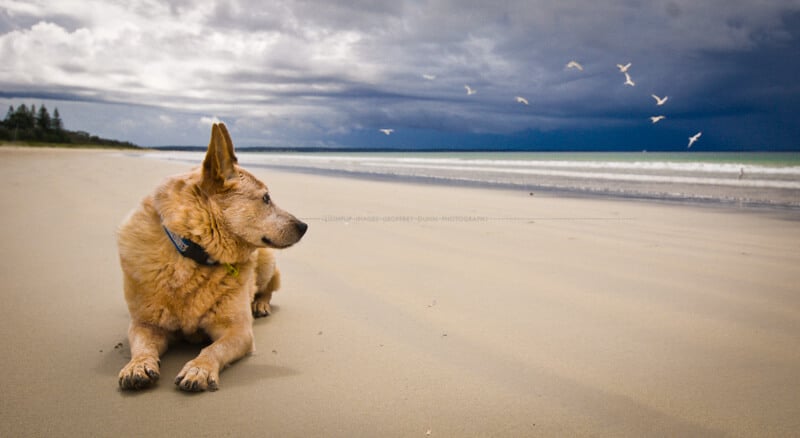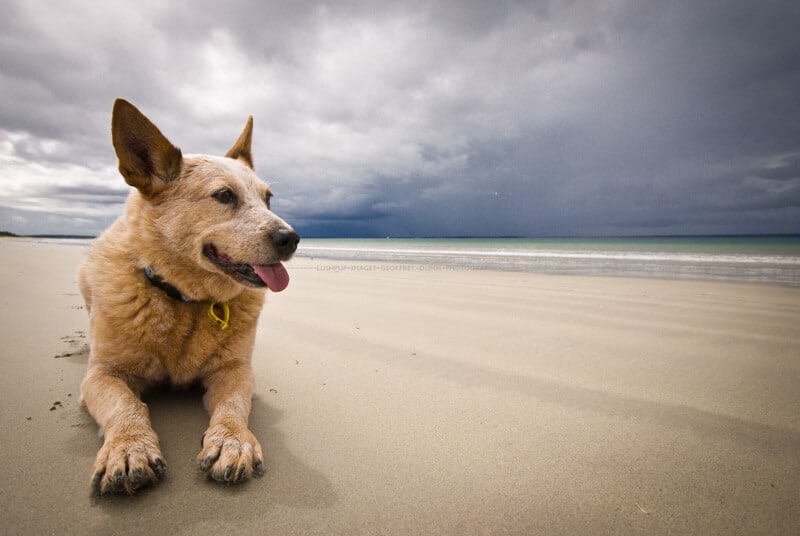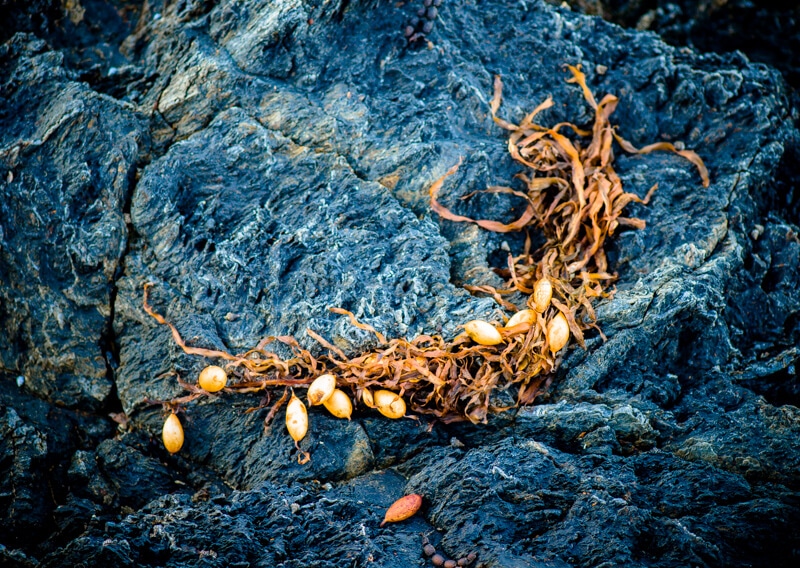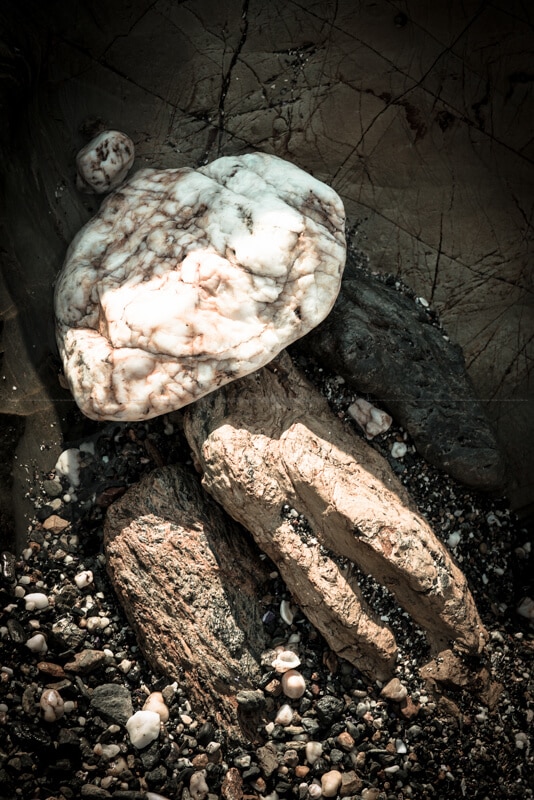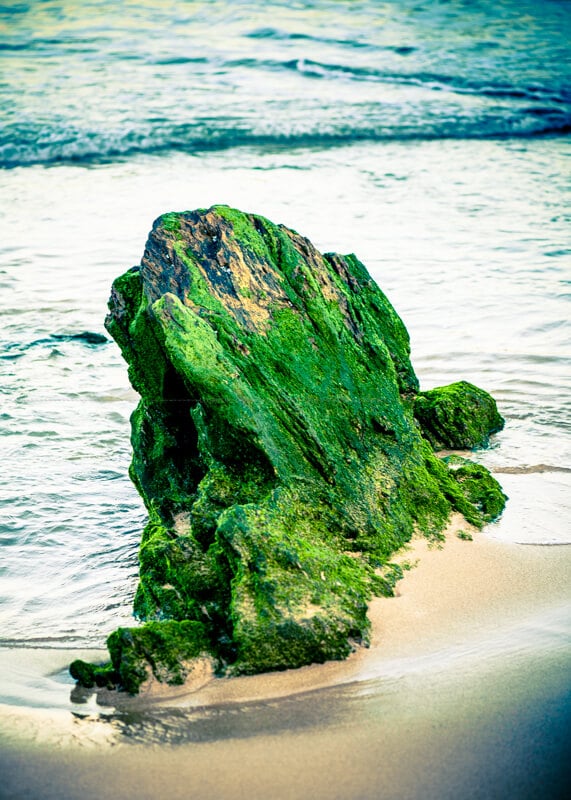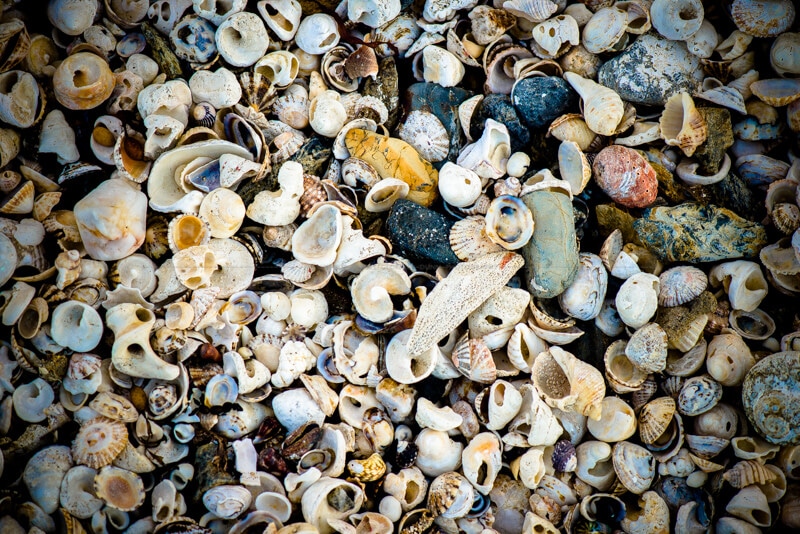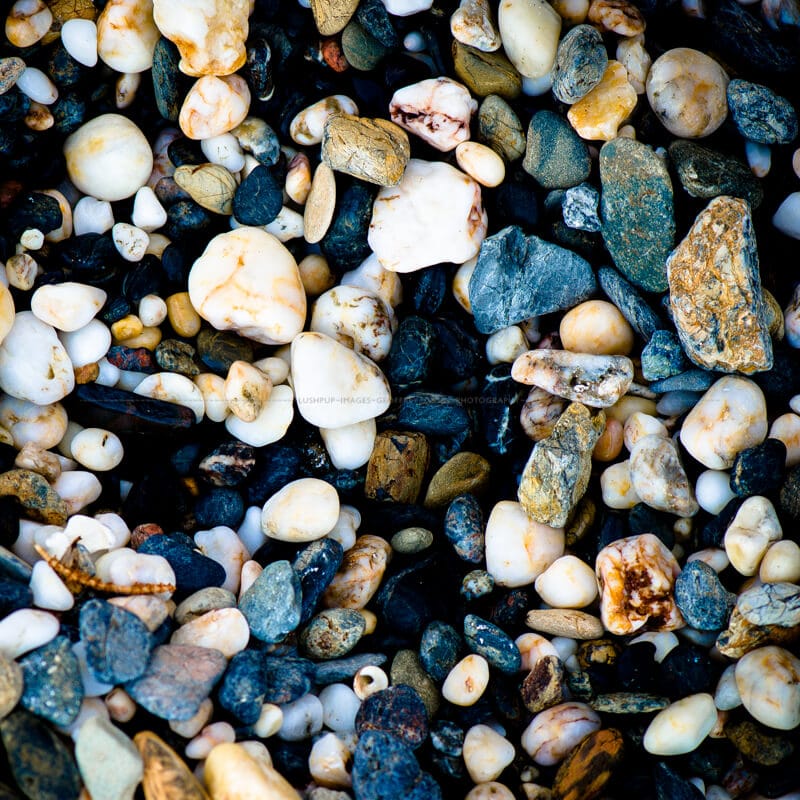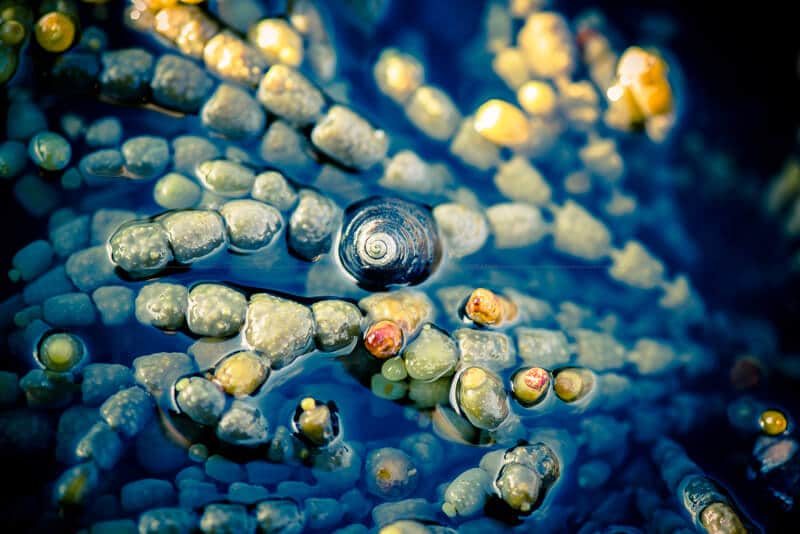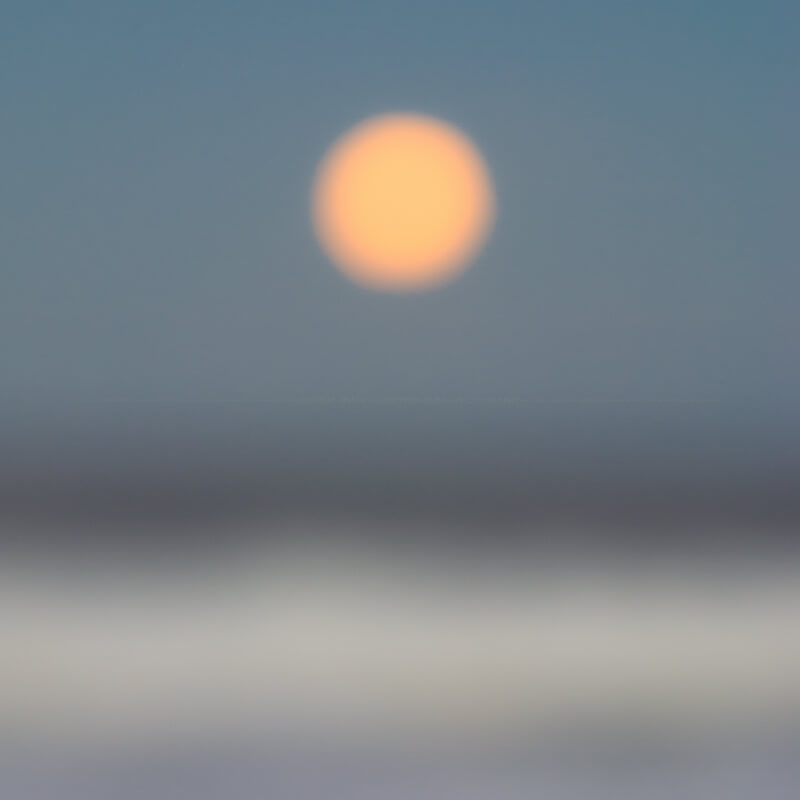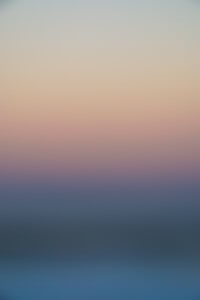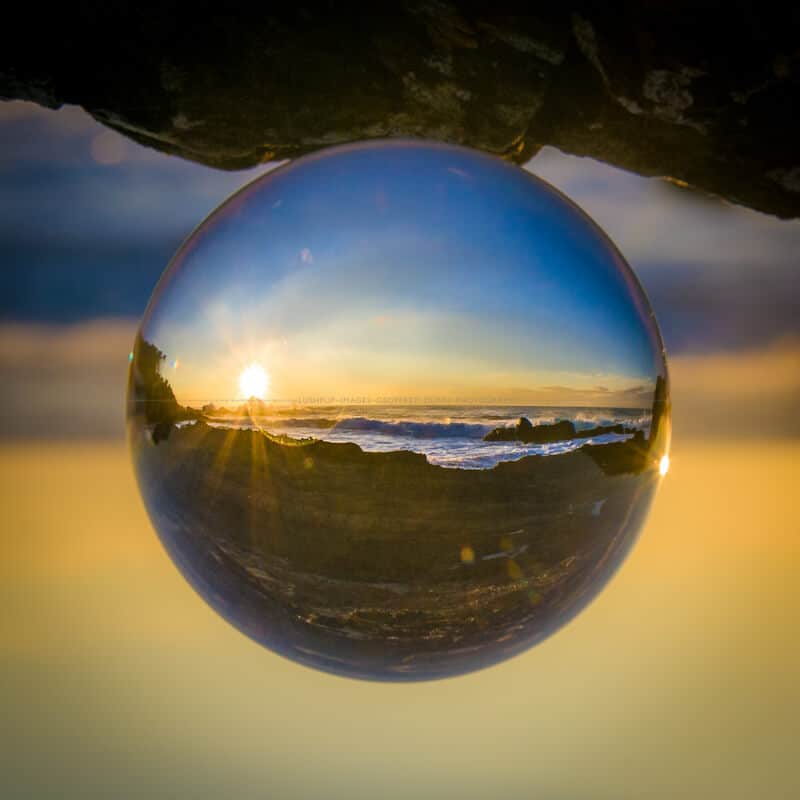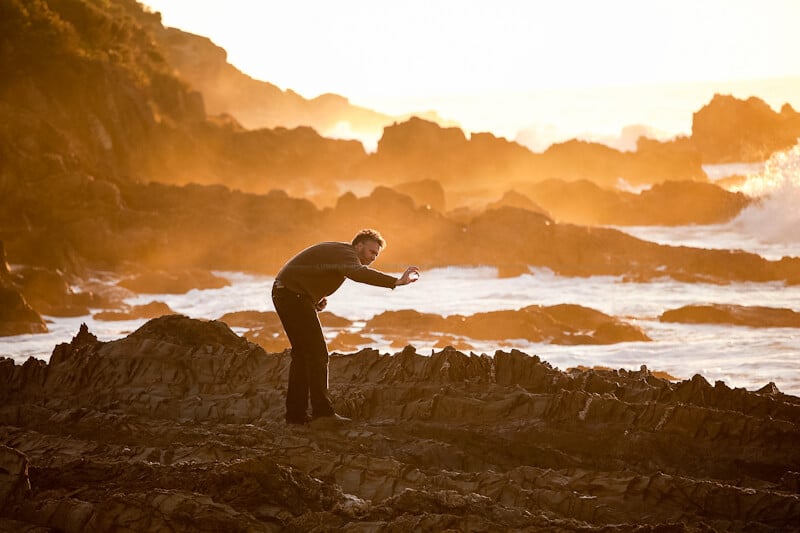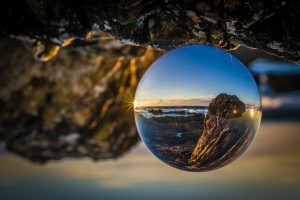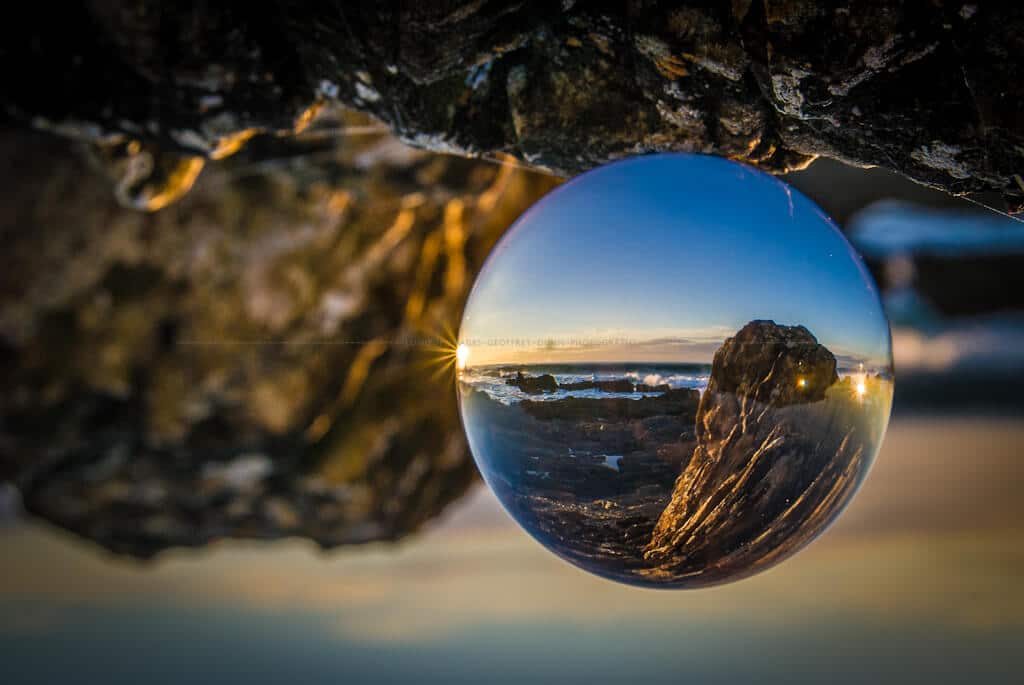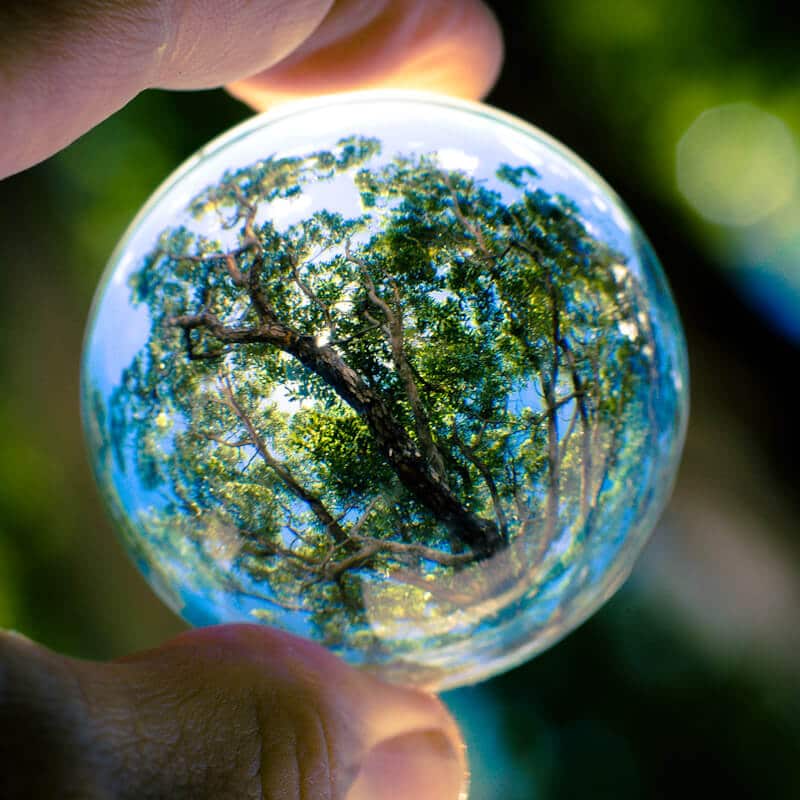Saturday's Sunset
Sun's departing rays
day collapses into embers
hot kisses linger
While at the coast on the weekend I witnessed a brief but fiery sunset. I was reminded of a quiet fireplace, embers burning aglow and of how a sunset is like the sun drawing the light of the day back into itself as it departs the sky ... the earth still warm and glowing from it's day-long kiss. An utterly romantic view of course of otherwise straightforward planetary rotation, but I like to indulge the romantic notion of collapsing light and embered skies.It adds a certain beauty to the world and that transition from day into night which we loosely call twilight when it is neither day nor night but a betwixt and between of experience and anticipation ... a time when there's a seeming pause to the world.
And then there's 'hot kisses linger' ... well they do ... don't they? :-)
Saturday's Sunset was captured at Malua Bay on the south coast of New South Wales ... the sky was afire but only for a moment.
Seaside Pull
standing on land's edge
water draining back to sea
feet sink deeper still
Spent a couple of days with the kids at the south coast this weekend. When I say south coast I mean the south coast of New South Wales ... the Sapphire Coast if you listen to the tourism bods. Canberra you see is a landlocked capital and about 2 hours drive from the coast ... not very far ... and a pleasant drive too. It just seems a long way when you're in Canberra but not very far at all when you're standing with your feet in the waves. It was cold by the way ... it being winter down this way and the water temperature is around 14-15°C ... a bit too cold for swimming but vibrant on the toes! The water was beautifully clear.
These pictures were taken with my phone as I stood watching the kids muck about in the sand and rockpools. I adore that feeling as the water drains from it's sigh up the beach and sluices sandily past your feet ... and ... if you wriggle your feet ... you sink a little ... somehow becoming more fixed to a point within an environment ever-changing ... it's the kind of juxtaposition that does something for me - it really does. A little seaside pull :-)
Starfield
Now here's a technique I've been wanting to try for a while ... starfield photography ... more specifically trying to capture the spiral arm of our galaxy better known as the Milky Way. Essentially I've been waiting for the opportunity to try out the high ISO sensor on the Nikon D600 but I have also been waiting for a couple of other variables first ... a suitably clear sky away from the most obvious light pollution being one ... living in the middle of even a small city like Canberra has kinda prevented that. An offer to spend this weekend past down at a quiet part of the New South Wales south coast seemed to tick all the boxes. This part of the coast is about two and a half hours drive from Canberra and it's a beautiful part of the world ... bays and beaches amongst rugged coastline. It was forecast to begin raining in Canberra but down at the coast it was extra clear. There was a waxing crescent moon but it wasn't in the sky for very long. We arrived at the house just after sunset and after it got a little darker I set up my camera, tripod and 20mm wide angle lens. I pointed it at the sky, cranked up the ISO setting to the camera's maximum (something ridiculous like ISO25,600!) and set a 20 second exposure and fired the shutter and this is essentially what appeared on the camera's display*...
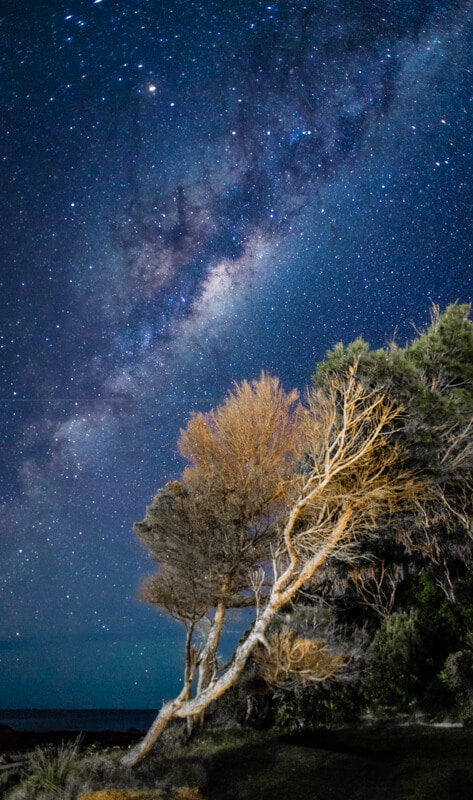
I swore ... loudly. The sentiment being largely 'wow!' and I remember looking up at the sky in wonder before setting the next shot.
Then I went down to the beach...

I think the thing that amazed me most about these pictures was that I have lived every day with such a massive feature in the sky but have, up until the weekend only seen it in glimpses or as a milky haze across the night sky. I also wondered how I could possibly get my eyes augmented to this kind of sensitivity ... I'd likely get the ultraviolet and infra-red modules too if they available ;-)
Wandering back up toward the house I put the fisheye lens on for a greater than 180° field of view ... this one was a bit later after the arm had risen and I'd had a cpuple of glasses of wine and also after most folks had retired for the night and turned out their lights...
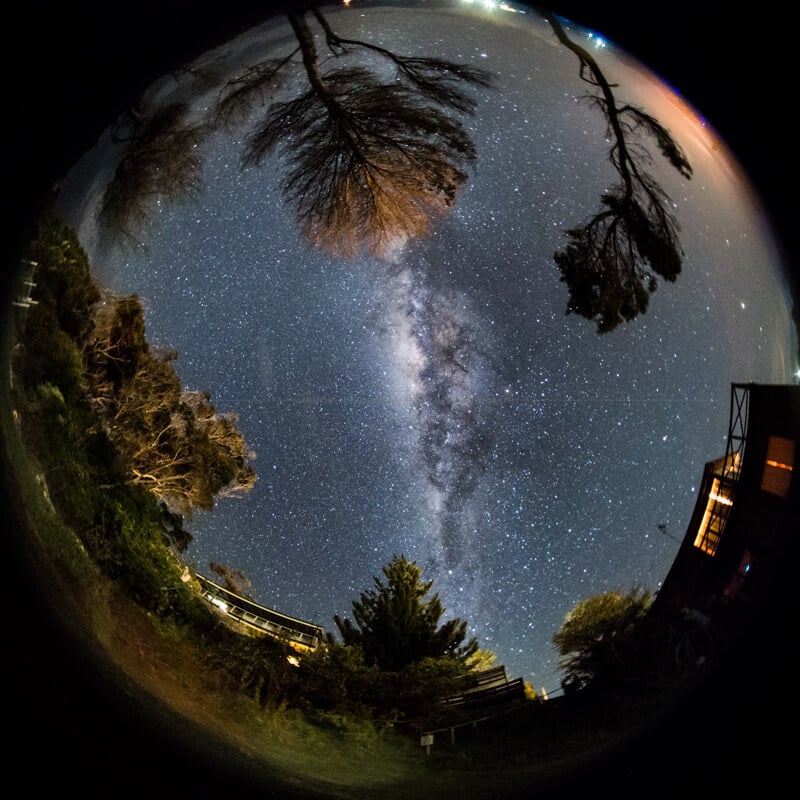
Back home again and processing these pictures accidentally converted the first picture to monochrome and I liked where it was pointing me so I went ahead and processed it monochrome too...

I think I like this version the best of all the starfields I captured ... what do you think?
*truth be told I tell a little fib ... this would be the third exposure after I'd dialled the ISO down to a more respectable setting (still ISO10,000) to reduce the noise.
a full moon always rises at sunset
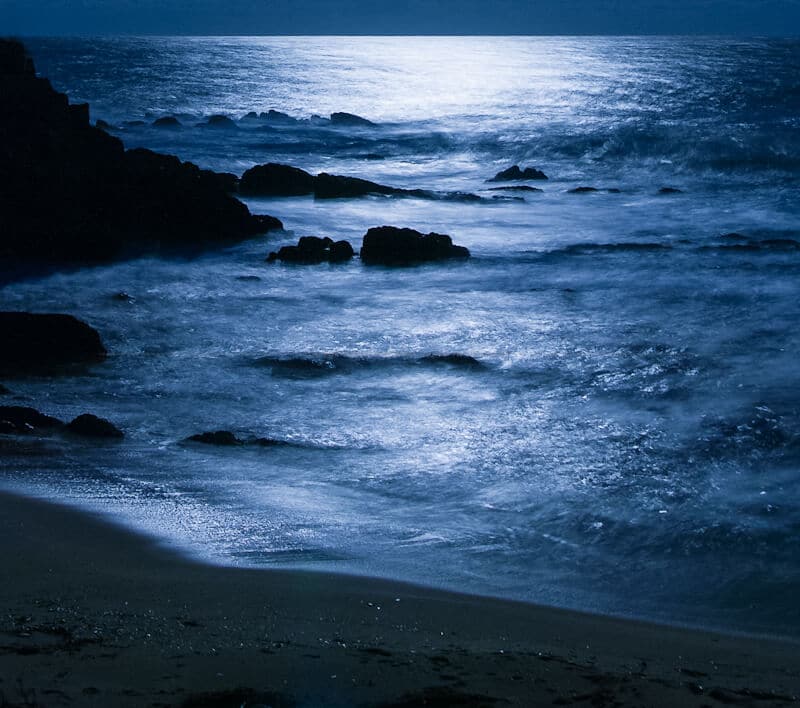
moon rises full across a sparkling sea the sun cedes the sky
You want to know something that absolutely fascinates me? Of course you do! You'll need to think about this a bit so let's go ... 'a full moon always rises at sunset' ... think about that for a moment. Have you ever seen the full moon rise at any time other than sunset? You know, like in the middle of the night or in the morning? The answer will be no because it doesn't happen. OK, so far, so good. Now hold that thought and add to the fact that the lunar cycle is fixed ... well OK, let's say regular at 29 and a half days (29.53059 days to be precise). So every 29 and a half days there's another full moon. OK? Now the next bit gets confusing but stay with me and let's quickly recap;
- full moon always at sunset
- full moon occurs every 29.5 days
Alrighty, there's another cycle working here too, the seasons. Every day the days get longer or shorter depending on the season you're in and by 'day' I'm referring to the amount of daylight. So, here in SE Australia the days are growing longer as we march toward Spring. There's a full moon this Thursday (2nd August) and it will rise at sunset even though the day has lengthened. What balance!
There's lots more moonphase related stuff over at Moonconnection.com which is where I lifted the diagram below;
]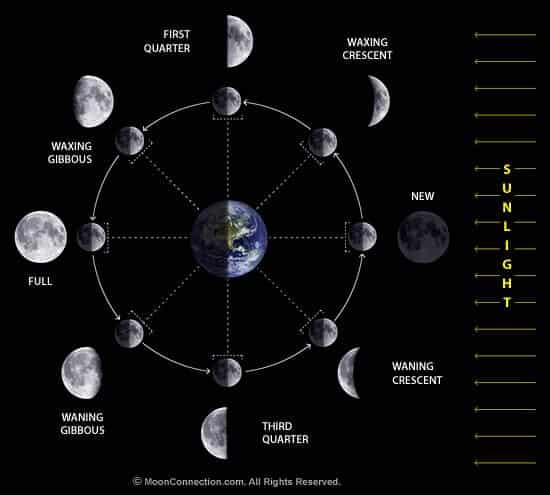
Courtesy Moonphases.com
Think about it next time you see a full moon rising ... just remember 'a full moon always rises at sunset'.
I'm the type of person who follows the moon and the seasons ... I know where the moon will be (roughly!) at any given time of the day or night depending on where the lunar cycle's up to.
Do you follow the moon? Do you use the sun to tell you which direction you're facing? Do you live above the arctic circle? You can tell me what happens there! Do tell. I'm interested.
Malua Moonlight
Rock pretending eternity Moonlight heavy on the sea Clouds bring the sky
Photograph and haiku of Malua Bay on the south coast of New South Wales. Lit here by about 8 minutes of the full moon. All is not what it seems. The moonlight softens the waves creating a smooth effect of deceptive calm ... the clouds coming in give the game away.
Fade
Fade I had no words today I thought to set words to this image to say what I thought when I created it or it created me ... I never can tell then I realised I remember standing there ... holding the trigger the roar of the ocean the bright dawn light I recall the click of the exposure ending after, I guess, the minutes I asked for that in between I went somewhere to where I do not know but it was peaceful there were no words
Sum of the Parts
Sum of the Parts
Ocean swells and falls as a twilight breeze ruffles my hair
salty fresh with spray
waves thumping deeply through bedrock
Watching the moon rise
and waiting
Alone now
Then it happens ... the scene blurs and folds
into two ... then three
Ocean Sky Moon
as balanced as they are suspended
Individually separate
As the sum of the parts
they are the world
(Inspired by Ness 2012)
I have been working on a series lately called 'Sum of the Parts' in which I deliberately blur my photograph in an attempt to break it into it's component parts. The pieces invite the viewer to to meditate on a scene without visual distraction of detail in a realm without time. That's the theory anyways! The first image in this series was blogged here as Sunset Wave and is shown below.
Tell me, do you work in or on a series? By that I mean do you think "today I'm going to take a picture for my *insert classy description here* series"? Or do you look back on your portfolio and think "Hey I've got a lot pictures of flowers/car number plates/left shoes ... I should put them together in a series"?
Do tell! :-)
Temple of the Sun
Another oculus picture from my coastal artist retreat from earlier this month at Ness. Here the rising sun clears the top of an exposed rock.
Looking at a scene refracted through the glass sphere makes it appear both internalised and externalised at the same time ... like I'm both within and without simultaneously ... it does something for me ... something deep.
Do you have a special object or way of of looking that touches you deeply? You know, makes you think of things differently for a moment? That takes you beyond?
Do tell :-)
12 Minutes with a Super Moon
I am always struck by the saturation quality of moonlight. The colours have a rich and understated vibrancy.
This is a small bay on the far south coast of New South Wales captured using only the light of the moon ... the Super Moon of 6th may 2012 to be exact. The exposure time is 12 minutes @f/9 and you can see there was plenty of light ... and colour! Our eyes simply don't see the colours of moonlight ... they're physically incapable of doing so. In fact seeing by moonlight is perhaps the closest we will ever come to naturally viewing a scene in monochrome. (In brief, it's to do with the rods and cones that lie in our retinas and something I will do a separate post about.) It was close to midnight and although the surf was pounding in on a king tide (presumably to do with the perigee of the moon) with waves reaching to a couple of meters from the tripod ... the long exposure has effectively smoothed everything out.
About the 'Super Moon'
The Moon’s distance from the Earth is not always the same due to the elliptical shape of the orbit and variations in the gravitational attraction between the Moon, Earth and Sun. When a full moon occurs close to the perigee of the Moon (the point of its closest approach to the Earth) we observe a “super moon” phenomenon.There are anywhere from 4 to 6 super moons every year, not all appear as intense or last as long in their 'super' effect. The perigee of the Moon on the 6th of May was the most powerful in years and caused many discussions in scientific circles. There was even a claim circulating that a Super Moon contributed to the 'sinking of Titanic' (wtf!) occurring as it did 100 years after the sinking in April 1912 ... my mind boggles when I reflect that some people believe this!
What about you? Did you see the Super Moon? Did you watch the moonrise or do anything special other than perhaps go outside and look and think 'hey, it does look a little bigger'?
Finding the Spot
A couple of weeks ago I attended an artists retreat down on the far south coast of New South Wales. I had my oculus, my glass sphere with me and I was down at the beach before dawn each morning looking for that time when light and landscape come together to create something breathtaking.
Sometimes a picture seems to assemble itself before my eyes. I get this feeling as a scene unfolds, like a premonition, that right this moment or very soon after something beautiful is happening in front of me or 'just over there'. Perhaps it is simply my mind opening itself to the possibility of beauty ... that I am allowing myself to be open to what is unfolding in front of me. Other times I can be surrounded by a terrific scene and light but I'm oblivious to it as I search for something within it ... something beyond it. Those times I'm looking to scratch an itch I can't reach ... I know there's something there but I can't see it ... yet! This picture is a rare one of me doing just that.
This is a picture of me taken by my friend Helga as I walked across the wave platform in the light just after dawn holding my oculus out in front of looking for the spot ... in my left hand I'm cradling my camera and my back pocket holds my cable release and intervalometer. I have an obsessive gleam in my eye that speaks of concentration and an early start. I am surrounded by superb golden dawnlight that the ocean spray is carrying in foggy curtains around me ... beautiful!
About five minutes after this picture was taken I was taking the photograph below (which blogged about here) ... I had found the spot ... I had seen beyond and now I'm sharing it with you.
How about you? Do you search, often surrounded by beauty but oblivious to it? Maybe you find yourself standing inside a tree heavy with spring blossom and buzzing loudly with bees looking for that bloom that speaks for the tree ... that speaks for all of spring? The leaf that speaks for Autumn... do you find yourself finding the spot?
I'd like to know :-)
The Beauty of Film
I recently attended an artists retreat with some lovely people. There were photographers, sculptors, painters, poets and writers and some great cooks amongst them! We spent three nights at an old house on the far south coast of New South Wales. It's there that many of the photographs featured in recent posts were taken. When I get around to it I'll even publish them all in the same place when I can get my head around all the great things that went on there.
For this post though I wanted to talk about the beauty of film. I took two cameras to the retreat; my Nikon digital and my Mamiya medium format camera. I got the medium format negatives and scans back from the lab this week. When I first started out in photography there was none of this digital business. I learned to develop my own negatives and darkroom techniques for turning those negatives into photographic prints ... the smell of acetic acid still holds a dear place in my heart as does the smell of a freshly opened pack of film. It's a wonderfully analog process - layers of light sensitive emulsions on a clear base change chemically when exposed to light. I like to think that my post-processing of my digital pictures for the most part mimics what I could do in the darkroom albeit on a much compressed time scale. I rarely manipulate my images much beyond tonal controls and cropping anyways. While I have embraced the digital revolution and all the whizzbangery it offers the modern photographer ... there's something about shooting film (apart from its smell).
The saturation and dynamic range surpasses that of my digital camera (a D80) and the rendering of detail is a wonderful thing to look at. In the photo of friend Greer presented above I had a roll of (very out of date) Fujichrome NPC160 film ... we're talking EXP:2007(!) which was given to me by another friend who'd had the film in his fridge since then. The negs came back beautifully. I took a similar shot with the Nikon but it doesn't have anywhere near the presence that this one has. Another consequence of shooting film is how much you value each frame. I get between 12-15 frames from a roll of medium format. I have to remind myself that it's both not very many and ample! That and how spoiled I have become with auto-focus, adjustable ISO and instant preview. When shooting 35mm I still find myself instantly checking the back of the camera to see how the shot came out ;-)
How about you? Are you purely digital? Did you transition from film to digital or have you only ever known digital? Have you returned to the beauty of film or picked it up anew? I'm interested in this ... do tell!
Turning the World Upside Down
Fresh salt tang scents the delicious white noise of surf on rock - irregular boom and thump unexpected quiet - pauses Never turn your back on the Sea She is inexorable and quick faster than you think Slams, knocks and pulls Cold! A short bubbled tumble before you're pressed into the polished rocks then fade into icy blackness I wake from this, standing - face tinted orange with the day's new light Dawn feels like days ago and I'm wearing potential's golden glow The world looks different from here huge and at once tiny My effect on it? The same. (Written at Ness, May 2012)
I carry a beautiful thing around in my camera bag. An oculus. It's a clear glass sphere and it changes the way I look at the world. It doesn't look amazing on it's own ... in fact it can appear quite dull but sometimes I hold it up in front my face and it takes my breath away. Through the properties of refraction, it renders any scene into a tiny world ... a tiny, totally in-focus world. An upside-down, totally in focus world. In the image above taken just after dawn on the far south coast of New South Wales, I rested the sphere atop a rock looking out toward the waves. The fine bedding of the Ordovician mudstones of this part of the coast have been buckled and twisted and rent vertically in places. I brought the sphere (and it's refractive contents) into focus and rendered the background blurred. It looks great right way up but I like to rotate my oculus images through 180 degrees to aid the viewer's appreciation of the scene. The little sun flare off the edge of the sphere is one of my favourite parts of the image.
In the image below, I'm holding the sphere with my left hand and shooting with my right. It was taken in coastal forest. This image reminds me that the world is a fragile place and one that we literally hold in our hands as a place to nourish and feed ourselves.
I'm fascinated with different ways of looking at ordinary things. Refraction and refraction images are just two.
What about you? Do you carry anything special in your bag? Something that turns your world upside-down or causes you to look at the world in a different way?
